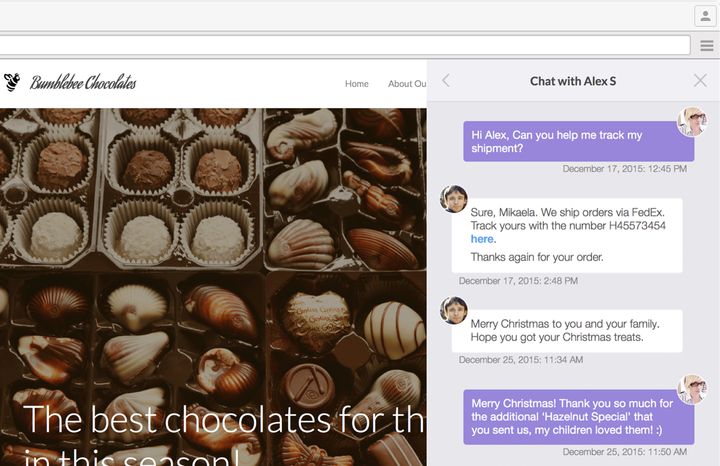While most people don’t think of it off the bat, marketing and customer service go hand in hand, especially in today’s day and age of social media.
See, if someone isn’t well-served from a customer service perspective, they will bring their complaints to social media in hopes that things change--for the better.
This became a pivot for me as a marketer, as I saw the need to nurture these public perceptions before they had gone out of hand, which could have potentially translated into a public relations nightmare for the company.
Today, it’s paramount for marketers to work in tandem with customer experience team members to serve the needs of their customers. While marketers may make an innocuous public broadcast, that same update could stir distrust in a new product launch, or can evoke negative sentiment about a product that is broken that’s not being fixed.
Think about that for a moment. A brand talks about a new product launch on Facebook, and the customers take to the comments to say “well, before you launch XYZ, how about you fix ABC?” In most cases, those responses are not handled by a marketing department. That’s where the customer experience team or a customer-experience centric communications team comes in.
What does this mean for customer acquisition and retention? It is a support and marketing based process, with both collaborating today more than ever before.
Beyond social media platforms, which are external to the client’s website, the same experience can be brought one-on-one to a company website. Many are familiar with the idea of Live Chat, but a newer technology, known as in-app messaging, has taken the customer experience space--and even the marketing space--by storm.
In-app messaging works quite the same way as Live Chat, a technology most of us are familiar with. However, it has three added benefits:
- It’s not in as-real-time as Live Chat, giving the support and marketing team members a chance to breathe so that they’re not glorified real-time chat reps. After all, marketers are busy doing more than just communicating with customers all day!
- Chats can be initiated by operators representing the brand’s website (as well as the other way around), which is contrary to how Live Chat works in that customers initiate chats with companies for assistance.
- In-app messengers also gather customer intelligence for segmented messages. For example, there are ways to send messages to people who haven’t logged on in 10 days, or who visited a site’s careers page, or who have visited only from the state of Florida. This is a marketing goldmine right here.

The above screenshot is a feature offered by freemium product Nudgespot and is relatively easy to implement. Simply put, the user signs up for an account, embeds a small Javascript snippet onto her webpage, and gets a little speech bubble on the bottom which can expand into what you see above so that a customer can initiate communication directly with an employee working at the company. Website operators, who can be anyone representing the company, such as the marketing team, customer experience team, or even the founders, will be notified about these questions and a conversation will ensue with the customer, who may or may not be online at the time. If they happen to be offline, an email is sent to them, so the communication never disappears but can be done in a format that is convenient to the customer and the company.
In-app messaging, also offered by the more popular Intercom, can work to cater to many different marketing needs more so than ever before. But before we talk about how, let’s talk about the user experience provided by in-app messaging:
- A customer doesn’t have to feel like they are locked into a slow email communication thread that may take days to respond to and last for weeks or months to be resolved.
- The same customer would not have to move off the website platform to communicate with someone on social media, a public forum that may not necessarily serve the customer well (exchange of sensitive information) or the company (negative feedback being publicly conveyed).
- Live Chat requires undivided attention by the customer, but the company may be juggling multiple conversations simultaneously, lengthening the period of time of the overall communication, which provides a poor user experience for the customer.
- Increasingly, more people prefer electronic communications to voice, and many millennials are averse to getting on the phone to seek out support.
In the age of social media, people prefer near-real time responses, especially as it relates to customer retention. This is why I launched my own real time email brand, creating a hybrid of real time email communications to cater to the fast-paced social media world, and speaks specifically to the customer experience facet of real time communications.
But in-app messengers go a step beyond, bringing that experience to a platform that keeps users on site, with an uninterrupted user experience, and since it’s not only a pull platform but also a push platform, there is much marketers can accomplish too.
Plus, the age of social media brings another element to this kind of communication: the human touch. In app messaging, more so than email or even social media (especially because conversations are typically shorter), empowers operators to be friendly with their customers. Case in point: when reviewing communications of a colleague of mine doing outbound communications with a prospective customer, not only did she bring him back to the platform to be a long term user (and eventually one of the company’s best customers), she also decided to connect with him for lunch to “pick his brain” about company direction and strategy, and he was more than willing to respond.
Could you have done the same in email or even Live Chat?
Probably not.
The idea behind in-app messenger, then, is not to limit yourself to a time-confined window of participation, but to continue communicating and building rapport on an ongoing fashion. Of course, this is only one of the few ways to utilize the technology.
Naturally, this drives acquisition, especially with the segmenting that is available for the in-app messenger tool. Here are some ways that could be done:
- A user who has not logged onto the site in 3 months can be offered a retention deal to bring them back via email or push notifications(browser & mobile), and in turn, upsell them to buy a better product or to renew at a special rate.
- A user who was reported to have logged in from California could be offered a deal exclusive to the brand’s Californian customers, with a special that is specifically personalized to drive additional interest and conversions.
- A user who has logged into the site 6 times in the last 2 weeks can be offered a special “fan deal” to encourage them to convert and buy.
- Similarly, a user who has logged into the site 6 times in the last 2 weeks who has visited a certain product page 5 of those 6 times is probably invested in buying that product. While this suggestion isn’t as automated as the other suggestions here, a marketer can make a personalized attempt to build rapport with this customer by sending him a deal to buy that product at a better price than is advertised.
One can glean tremendous insights on user behavior from segmentation. It doesn’t even have to be limited to messaging. In-app messengers are analytics tools too.
More importantly, in-app messengers facilitate communication in other unique ways. Not only can the customer speak with the company, the company can pass the torch of the communication to a better, more suited employee, to handle requests. Let’s say you’re a credit card company and your customer has a question about their balance, but then they want to contact someone at the fraud department for a dispute. Now, I don’t know if credit card companies are ready for in-app messaging just yet probably due to financial compliance, but I certainly would think it’s easy for the level one support rep to pass the communication to fraud department with no disconnection from the customer, which makes things pretty darn awesome for the end user, saving his time and effort.
Plus, in terms of communications, in-app messengers give marketers the chance to A/B test their messaging to see which performs better, and based on data, marketers can better target messages to the right audience segments.
In short, in-app messaging is an efficient hybrid of a convenient online-based communication that is making company and community websites humanize brands in a way never previously possible. That kind of personal touch translates to high level retention and acquisition, positioning this customer experience service as a super engaging marketing tool for relationship building.
